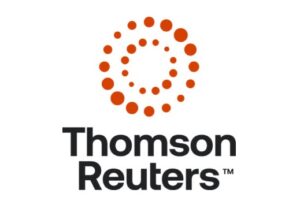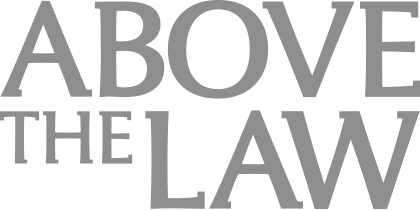Shouldn’t AI Adoption Be About Competitiveness?
When the switch flips, it flips quickly.
 Recently I was speaking with a colleague who started practicing law in 2006. When onboarding at her firm, she was offered the option of dictation machine — and declined. Even in 2006, newly graduated attorneys were emerging onto the job market with typing skills and the expectation that most work product would be digital.
Recently I was speaking with a colleague who started practicing law in 2006. When onboarding at her firm, she was offered the option of dictation machine — and declined. Even in 2006, newly graduated attorneys were emerging onto the job market with typing skills and the expectation that most work product would be digital.
Of course, it wasn’t always that way. Senior partners approaching retirement will likely recall their firm’s typing pools, where letters went to be retyped from scratch rather than edited on a computer file. (Does anyone remember Wang VS?) Competitive pressures and the weight of client expectations eventually moved firms to introduce personal computers to attorney desktops — even though many of their most polished attorneys still couldn’t type. And nowadays you need look no further than their preferred online meeting software for proof that transcribing the spoken word is a valuable productivity technology.
The point here is that recent decades have borne witness to significant advances in productivity and automation that streamlined the way attorneys work. Firms modernized not with an eye on ROI, but simply because competitive pressures dictated that they must. I anticipate that the same principle will largely apply to generative AI and machine learning.
Law Firm Business Development Is More Than Relationship Building
Clients expect their firms to keep current with technology. There is a point where the switch “flips” and technology pivots from novelty to baseline expectation. A day came when clients expected an urgent edit to be in their e-mail in 30 minutes — and so almost overnight that trip down to the typing pool became obsolete as attorneys and their firms were forced to move at the speed of information.
When the switch flips, it flips quickly.
I was recently speaking with a customer that mentioned a client request for a task to be performed with machine learning. Two firms were being considered. One firm could perform the task and the other indicated “they could have the technology installed in a week.” Which firm do you think got the business?
Some clients still have prohibitions from using GenAI in work. But what happens when the switch flips and a request for proposal requires the use of a particular AI technology? Firms that have prepared and invested will meet client needs head-on and garner a reputation for responsiveness. And those that lag behind? Let’s say that scrambling to catch up is a challenge.
Sponsored
Law Firm Business Development Is More Than Relationship Building

Thomson Reuters' Claims Explorer: A Powerful Tool For Legal Claim Identification


Luxury, Lies, And A $10 Million Embezzlement

Thomson Reuters' Claims Explorer: A Powerful Tool For Legal Claim Identification

We are still in the infancy of GenAI tools. Nobody is that far ahead of anyone else, so let the anxiety fade. But firms that prepare and develop processes to leverage these GenAI tools will find that they can be more responsive and efficient than firms that lag behind. Remember: Moving decisively does not negate your ability to move strategically.
Here are a few quick tips to keep on par with the market:
Ask Clients
Ideally a structured program will provide solid feedback, but even informal feedback is important.
- Let clients grade your work with a report card.
- Ask if things could be learned from other firms they use.
- Solicit honest assessments.
- Ask what your client’s goals and expectations are in the coming year. It’s even OK to ask them what standards they expect to change (e.g., changes in expectations around the use of AI).
Sponsored

Tackling Deposition Anxiety: How AI Is Changing The Way Lawyers Do Depositions

Curbing Client And Talent Loss With Productivity Tech
Review Processes
In legal research, the fear of likely mistakes has centered on missing out on information. Boolean searching is so powerful because an attorney can have relative confidence that a database was searched appropriately and that no relevant documents were missed.
But with GenAI solutions, the problem can be the opposite. The problem is ensuring that extra information (like a hallucination) isn’t added into work product. Firms will need to ensure they alter their processes to look for added or incorrect information rather than missing information.
Experiment With Technology
By now, most large firms have a GenAI team that has been evaluating technologies. The trick is to prioritize rather than going too deep too early. Identify some prospective goals and experiment with technologies that may be able to help you get there.
Can GenAI allow us to create faster documents? Can GenAI create better clauses? Can GenAI provide a better outcome for my tax clients? Execute on an experiment. If there is promise, move forward. If there isn’t, move onto the next goal or try another technology.
It’s always hard to predict the elbow in the curve or know when the switch is going to flip. If we were good at that, all of us would be retired on the beach. The key is to continuously assess where you stand relative to peers. Understand what your clients expect. Control what you can and prepare for the now. And always be learning.
 Ken Crutchfield is Vice President and General Manager of Legal Markets at Wolters Kluwer Legal & Regulatory U.S., a leading provider of information, business intelligence, regulatory and legal workflow solutions. Ken has more than three decades of experience as a leader in information and software solutions across industries. He can be reached at [email protected].
Ken Crutchfield is Vice President and General Manager of Legal Markets at Wolters Kluwer Legal & Regulatory U.S., a leading provider of information, business intelligence, regulatory and legal workflow solutions. Ken has more than three decades of experience as a leader in information and software solutions across industries. He can be reached at [email protected].







